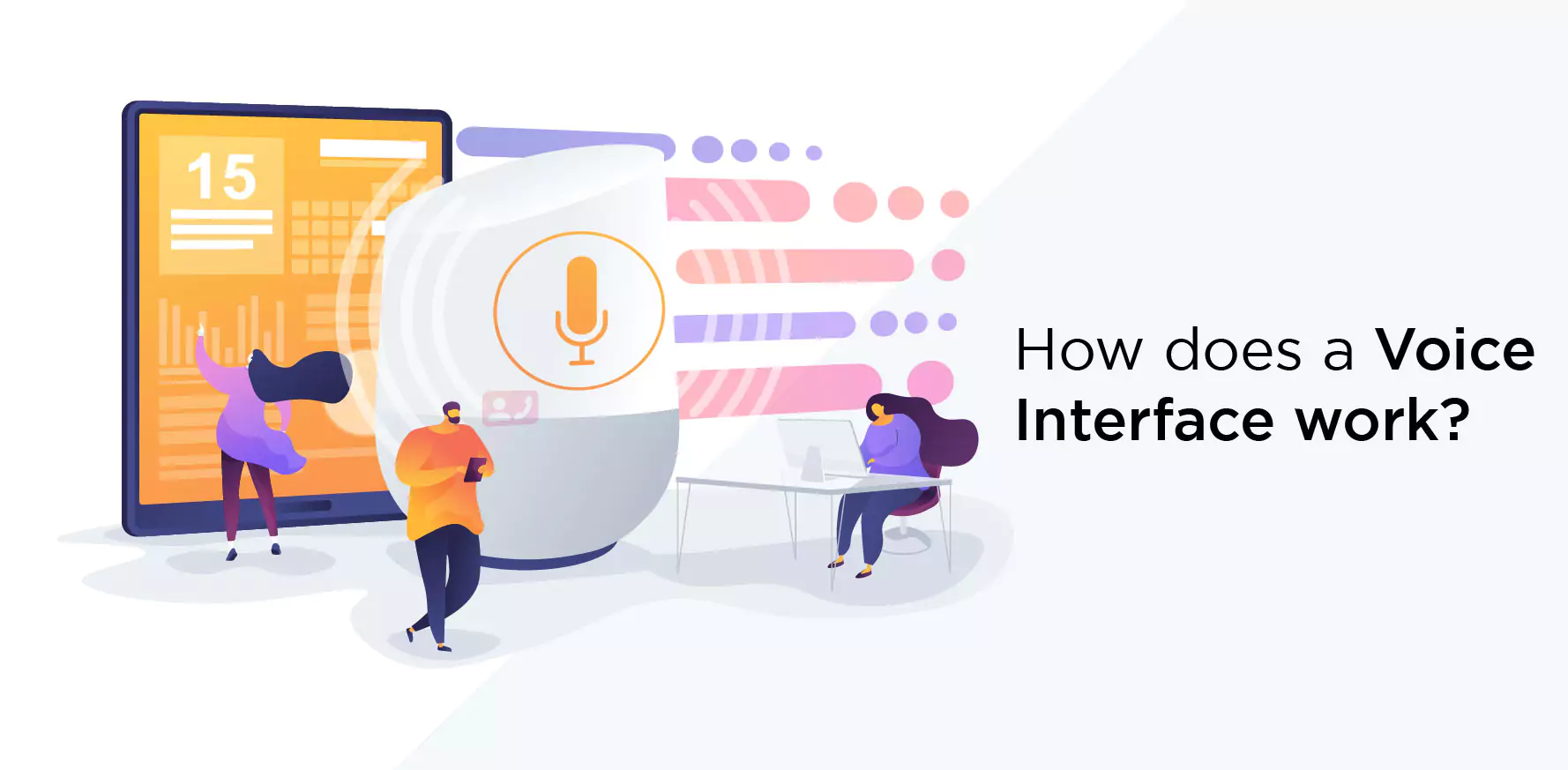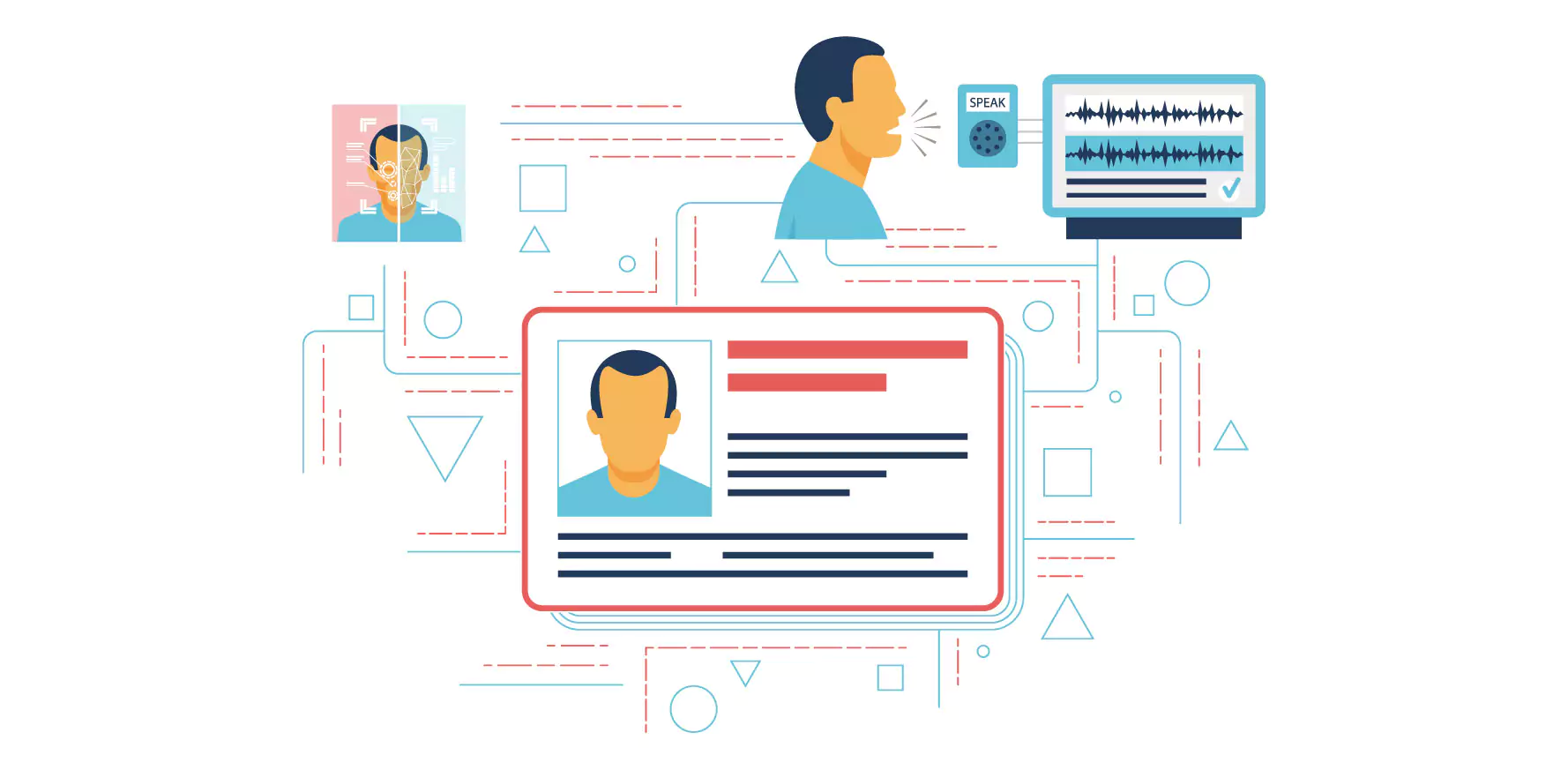A voice user interface (VUI) is a system that allows spoken human interaction with computers.
VUIs typically use speech recognition intended to understand spoken requests from the user and are also able to answer these requests through text or voice outputs.
From Google assistants to Siri, voice-controlled devices have become household members. According to Google, over 41% of people own voice-controlled devices and have them as virtual friends.
But have you ever thought about the technology behind these voice-controlled devices?
If you did, you must have come across the term VUI or voice user interface. It enables users to interact with a device using voice commands.
With the help of a voice user interface, you don’t need to carry devices with you yet have complete control.
Voice user interfaces in voice assistants are reshaping the human-device relationship. VUI also helps in rebuilding customer behavior in the field of ECommerce.
Keep reading!
What is Voice User Interfaces?
Voice user interfaces (VUIs) allow users to interact with a system by speaking or speaking commands. VUIs include virtual assistants such as Siri, Google Assistant, and Alexa.
The main benefit of a VUI is that it allows consumers to interact with a product without using their hands or their eyes while focused on anything else.
What makes VUI unique is that it uses voice as the primary command rather than the same old mouse keyboard inputs or touch screen input.
People are sometimes dubious of the intricacy that the VUI can grasp since they equate voice with interpersonal communication rather than person-technology interaction.
As a result, for a VUI to succeed, it must have a strong understanding of spoken language and instruct users on what kind of voice commands they must use.
Because of the complex nature of a user’s interaction with a VUI, a designer must pay particular attention to how quickly a user might go overboard with expectations.
The product is designed in such a basic, nearly featureless manner—to remind the user that two-way “human” communication is impossible.
VUI helps with tasks such as:
Performing Web searches.
Shopping
Playing music
Setting alarms, timers, and reminders
Getting real-time weather and traffic
How does a Voice Interface work?

VUI typically uses speech recognition intended to understand spoken requests from the user and is also able to answer these requests through text or voice outputs.
The merging of many Artificial Intelligence (AI) technologies, such as Speech Synthesis, Automatic Speech Recognition, and Named Entity Recognition, results in a voice UI.
In simple language, it takes voice commands from the user and then acts or performs according to the given instruction from the user.
The VUI’s speech components, powered by AI, are frequently kept in a private or public cloud, where the VUI processes the user’s voice and speech.
Components of VUI
1. Automatic Speech Recognition:
Automatic Speech Recognition (ASR) is a text-to-speech system that analyses and processes human speech.
ASR must filter out distracting acoustic sounds and recognize human speech instead of giving audio input.
It might be difficult due to audio distortions and streaming connection issues.
It may have several barriers, but a user must design it in such a way that it should focus on the user's command and neglect other sound barriers.
Several underlying technologies, such as Gaussian mixture models (a probabilistic model) and deep learning with neural networks that process and distribute information to gather data, have been studied and utilized to construct ASR technology.
2. Name Entity Recognition:

Name Entity Recognition (NER) is a technique for identifying the underlying entity of words.
Entities or semi-structured text can be a person, a subject, or something as particular as a scientific word, and NER can find them.
When determining the value of an entity, NER frequently looks at the surrounding text or words. ASR relies on NER to resolve words as entities.
NER is very context-sensitive and requires extra information to identify things accurately.
3. Speech Synthesis:
Using input text, Speech Synthesis creates an artificial human voice and speech.
VUI completes the task in three steps. Input, processing, and output are the steps.
Speech Synthesis is a text-to-speech (TTS) output in which a device reads aloud over a loudspeaker what was entered with a synthetic voice.
It is simply used in the google text-to-speech feature or the google scan feature, where the given input is read aloud by the system
Benefits of VUI:
More convenient than typing: Dictating is handier than text messages since it is faster.
Easy to use: Not everyone is comfortable using technical equipment. However, users may use speech to ask VUI devices or AI helpers for a job.
No use of hands: Speaking is far more practical than typing or tapping in various situations, such as driving, cooking, or while away from your device.
Eyes-free: VUI offers a hands-free experience. When driving, for example, you may concentrate on the road rather than the gadget.
Drawbacks of VUI:
Privacy concerns: Some users are concerned about the potential for a VUI to violate their privacy.
Inaccuracy and misinterpretation: Voice recognition software still has faults. The program cannot comprehend and grasp the linguistic context, resulting in mistakes and misunderstandings. Voice dictation for automated typing may result in mistyping since VUIs do not always distinguish homonyms, such as “there” and “their.”
Public spaces: Due to privacy and noise concerns, giving voice instructions to gadgets and AI assistants in public spaces might be difficult.
Conclusion
The Voice user interface went from recognizing a few words to speaking a million vocabularies in different accents and styles.
It has grown in many fields and has had a good impact on day to day lives of people. It also focuses on user experience design in the UX field.
Many businesses are switching to the practical uses of VUI while combining graphical user interfaces. The world is in the evolving stage and is more likely to switch to VUIs.
VUIs are created with the help of AI, automatic speed recognition, named entity recognition, and speech synthesis.
It has many benefits, including in different sectors like eCommerce, education, and more. It is for sure that voice user interfaces are the future of AI.
Don't forget to check out Botpenguin to get the perfect chatbot for your website and social media platforms!
Call Botpenguin today to escalate your business exponentially.



